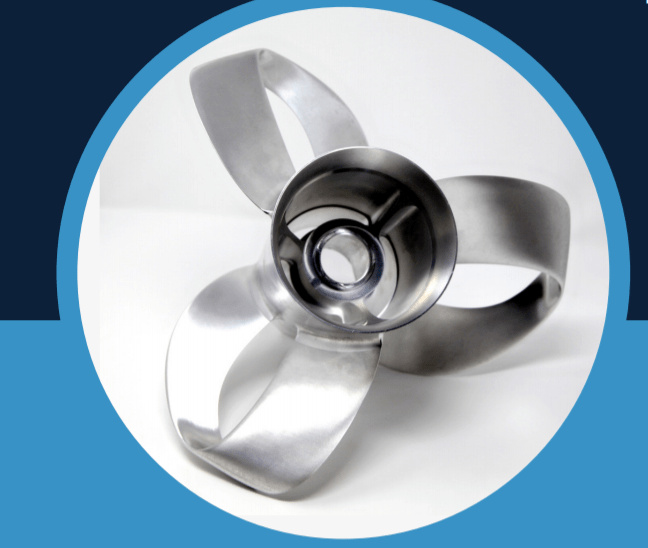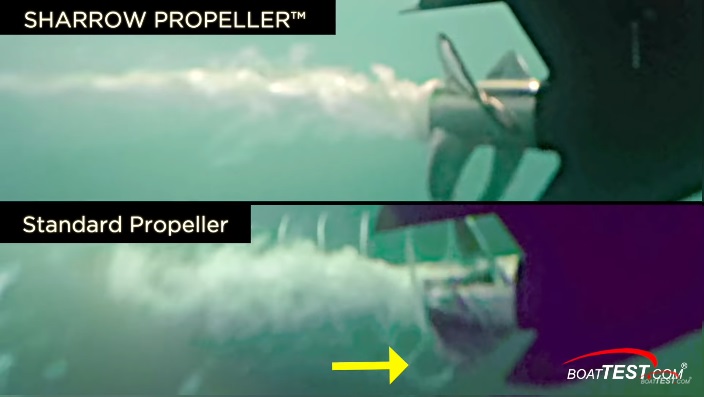The key for efficiency in FR prop, in my opinion, is reduced blade thickness. That’s what most does the trick. Any add on like the above tug boat solutions will add drag above a minimum speed. As proof of concept just try with and without duct (any style of duct).
compared to a single marine prop you will get a 10% increase in efficiency using a dup prop.But it comes with added complexity.
@MaB I think the point made is: if you’re running a duct might as well add features to improve efficiency.
@Riwi that’s interesting. Do you mean two separate props or counter rotating? Can’t imagine two separate props could be more efficient but I’m no expert.
two counter rotating.
Wow that is a nice one.
Ok, this is totally new to me. Loop prop seems to be more efficient & faster than conventional ones.
I will give a try and let you know as soon as I get my motor pod ready.
I guess, its a Challenge to create a stl 
Printed and tested on testing pool at work, definitely an exercise of style. Crappy performance though. 3d printed with a Statasys, lasted only a few run.
At hi rpm the less on water the best
Do you think you got the crappy performance because of the 3D material ? Or is this just not appropriate for our use ?
3d ASA or ABS did not withstand the abuse, we tried the prop just out of curiosity and enthusiasm for such fancy design, on a bowthruster pod, measuring rpm, thrust, power absorption and noise. The thrust was ridiculously low, lot of drag because power request was unusually high respect to the classic 4 blades propellers, even the 3d printed ones (we use such, at first, before to CNC the couple of chosen models.
Anyway, it’s printable, a little tricky to CAD properly and to be printed without solvable supports…but surely doable. If it won’t work…still an attractive object to keep on your desk!
I was wondering whether we were off topic but looking at the aft streams at 13;50 shown in the video… Then the question is … were those two pictures taken in same conditions (constant and identical speed, boat weight, …)
This would deserve a separate topic. Maybe we could start with a replication of a given N-elongated blade prop with an angular shift = (angle between two consecutive blades / 2) and blades joined to their tops. As @Mab said, that is where 3D printing becomes handy…
One thing is sure, the curved shape of the blades provides mutual strength…
Did you do a STL? Can I play around with it?
Not yet, been busy with the conventional one. I will share the stl as soon as I design it no worries.
Ok, thank you for contributing.
Cool, our first duct which can be found on grabcad and insteuctables have twisted stator upstream of the prop, if anyone want to try, it was a pain to draw:p We also made one with twisted stator downstream of the prop, as this shold be more efficient than upstream stators according to a fluid dynamics guy.
katana|241x500 on the rear of the prop, which accord
It works, but dont know if the efficiency is any better. There was no big different having the twisted stators on the rear of the prop compared to the front, considering that we had stators in Front and in the rear in this setting. It gives additional safety.
We changed to regular thinner airfoils later, and removed the rear twisted stators as it was a pain to disassemble after being soaked in salt water.
Niko
@Hiorth
Ive been riding your original design for over a year now. It works great. I can’t thank you guys enough.
I have been thinking about changing the duct for your straight stator design. Did you notice any difference in performance with the straight thinner airfoils.
Awesome, we are happy that you enjoy it:)
We changed to a thinner straight airfoil on the struts/stator and we also changed the airfoil on the duct itself to a thinner naca profile. It’s better at higher speeds. At low speed the initial design seems to give more thrust for same amout of watts:)
.

